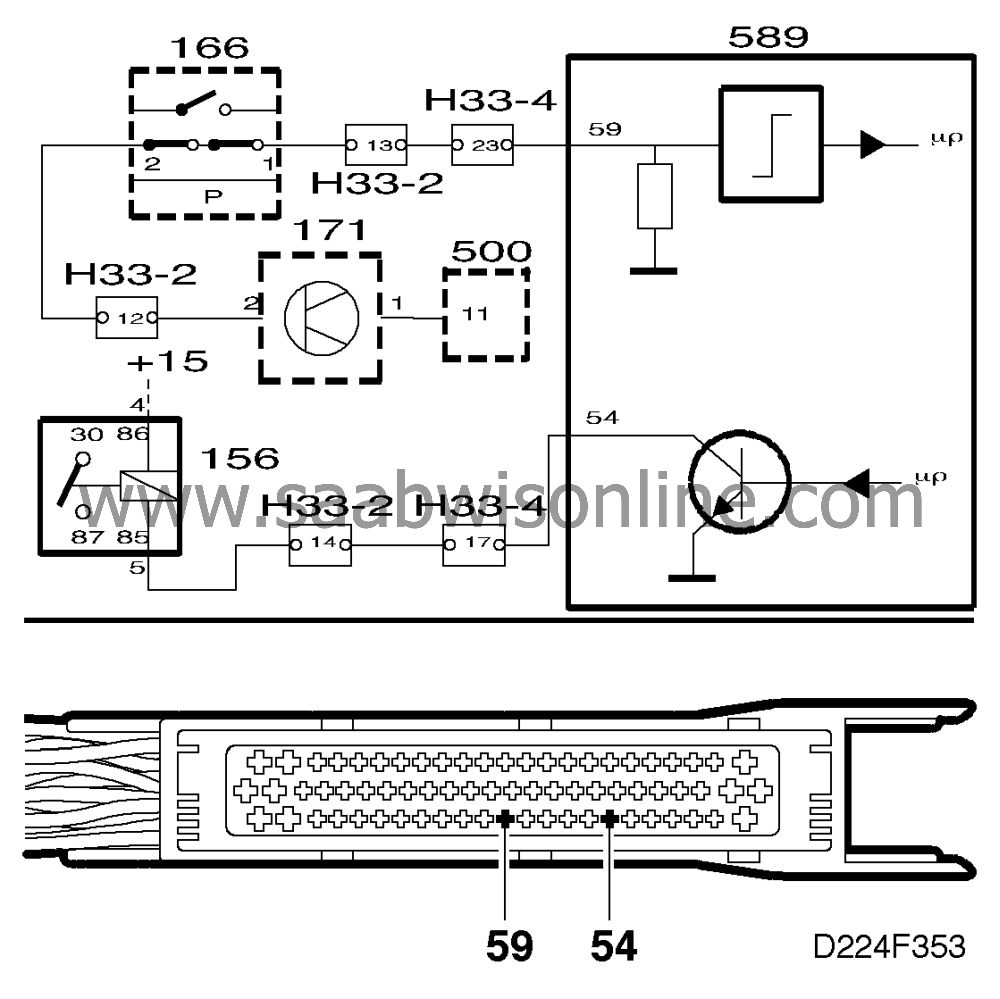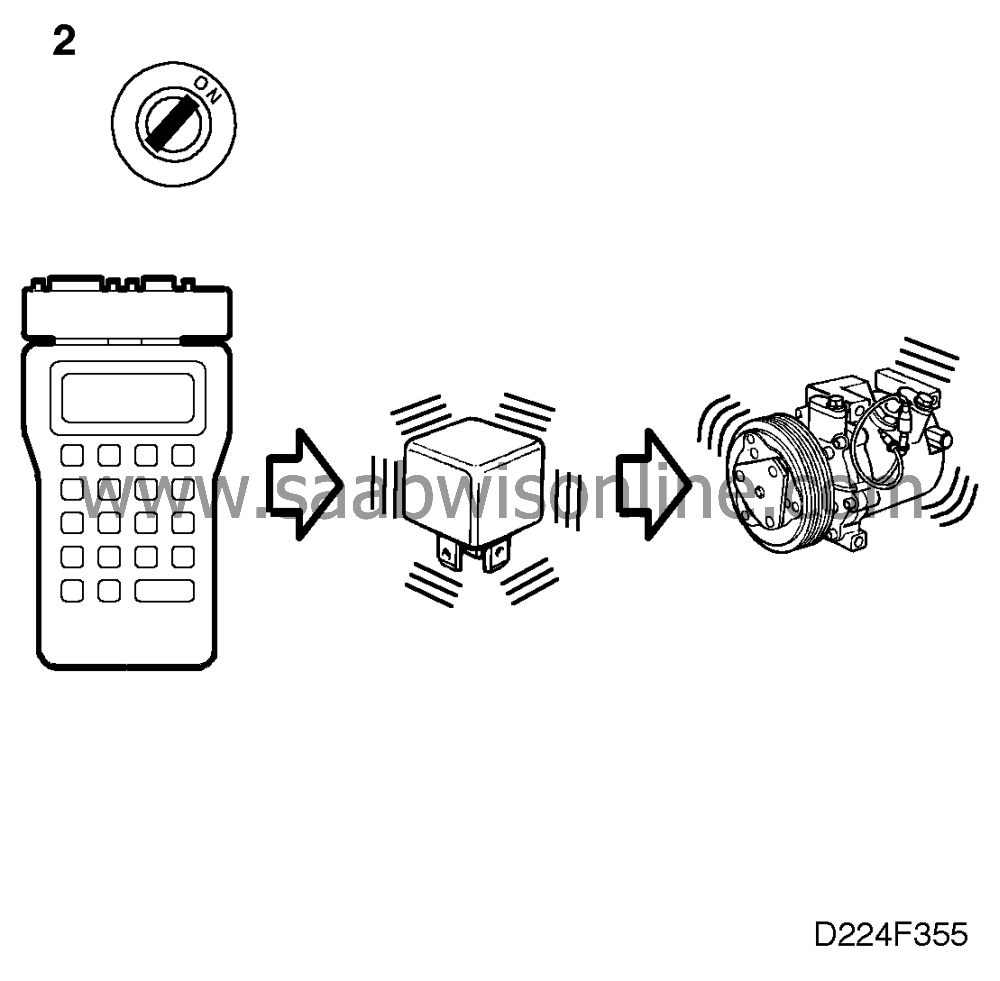A/C
Symptom of fault
The A/C compressor clutch does not engage.
Conditions
No diagnostic trouble codes.
For the Trionic system to activate the A/C compressor, the engine must have been
started and the pressure sensor and throttle position sensor must be in perfect working
order.
Functions/Definitions
Information to the effect that the compressor is to be engaged ("A/C IN") is received by
the Trionic control module on pin 59. The control module prepares for this imminent load
increase by opening the idle air control valve slightly. Via pin 54 the Trionic control module
then grounds the A/C relay, which in its turn controls the A/C compressor ("A/C OUT" or "A/C
RELAY")
Diagnostic procedure
1. Check the A/C request ("AC IN")


|
-
|
Connect an ISAT scan tool.
|
|
-
|
Contact the Trionic system.
|
|
-
|
Activate the compressor from the
dashboard:
|
|
|
•
|
Manual A/C: fan ON and A/C
button depressed.
|
|
|
•
|
ACC: select AUTO. Note that the antifrost thermostat periodically breaks the
signal between the ICE and the Trionic system.
|
The ISAT scan tool should show "ON" and engine speed should increase
slightly.
Conditions fulfilled?
Continue with point 2.
The fault is situated
before
the Trionic system
(between the A/C button or ACC control module and pin 59). Continue fault diagnosis as
described in Service Manual 8:3 "Climate control system, ACC" and Service Manual 3:2
"Electrical system, A/C-ACC".
|
Note
|
|
If the engine coolant temperature is too high or in the event of an incorrect engine
coolant temperature sensor signal to the ICE, the ICE will break the A/C circuit.
|
2. Check the A/C relay ("AC OUT")

|
-
|
Ignition switch in ON position.
|
The A/C relay and the compressor clutch should now both be heard.
Conditions fulfilled?
No electrical fault present.
The fault is probably after Trionic (i.e. between pin 54 and the compressor).
Continue fault diagnosis as described in Service Manual 8:3 "Climate control system, ACC". If
no fault can be found, continue as described on
 .
.



 .
.


